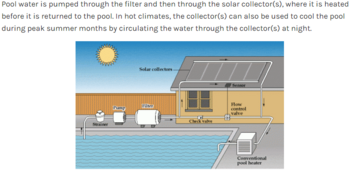I have a rather small house (even for European standards - 95m2) that is being heated in winter by low temp hydronic underfloor system powered by a wood pellet burner. I'm happy how it works in winter and the cost to heat is reasonable as the house is well insulated. Depending on how cold or warm the winter is I burn 1.5~2.5 tons of coniferous pellets per season.
But, summer heat is getting quite bad as I work 100% from home and I use powerfull PCs that make my "office" even hotter. So I started looking into air-water heat pumps for the purpose of underfloor cooling. As I'll have excess power during the summer once I install my next batch of panels.
There are various online heat pump heating calculators that claim I should be fine with a 6kW heat pump. But there are none I can find for cooling(at least focused on my climate and local building methods).
I've done quite a bit of research and I came to a conclusion I need an 8kW split R32 unit for cooling (R32 because r290 is still too expensive, split, because I plan to switch it off in winter without risk of freezing so no monoblock). I decided to get TCL's (rebadged Chinese product that is no doubt sold under different names everywhere) with a model number of THF -8D/HBpO-A. One of the reasons is the compact indoor unit. I'll still use my electric tankless water heater for hot water as I have no space for a hot water tank.
But I'm having second thoughts if this is the best (budget!) choice so I decided to ask the forum. I'm getting the unit for $2500 and I'll do 90% of the install myself.
Anyone here who uses underfloor hydronic cooling? What are some pitfalls to avoid (other than condensation).
But, summer heat is getting quite bad as I work 100% from home and I use powerfull PCs that make my "office" even hotter. So I started looking into air-water heat pumps for the purpose of underfloor cooling. As I'll have excess power during the summer once I install my next batch of panels.
There are various online heat pump heating calculators that claim I should be fine with a 6kW heat pump. But there are none I can find for cooling(at least focused on my climate and local building methods).
I've done quite a bit of research and I came to a conclusion I need an 8kW split R32 unit for cooling (R32 because r290 is still too expensive, split, because I plan to switch it off in winter without risk of freezing so no monoblock). I decided to get TCL's (rebadged Chinese product that is no doubt sold under different names everywhere) with a model number of THF -8D/HBpO-A. One of the reasons is the compact indoor unit. I'll still use my electric tankless water heater for hot water as I have no space for a hot water tank.
But I'm having second thoughts if this is the best (budget!) choice so I decided to ask the forum. I'm getting the unit for $2500 and I'll do 90% of the install myself.
Anyone here who uses underfloor hydronic cooling? What are some pitfalls to avoid (other than condensation).




